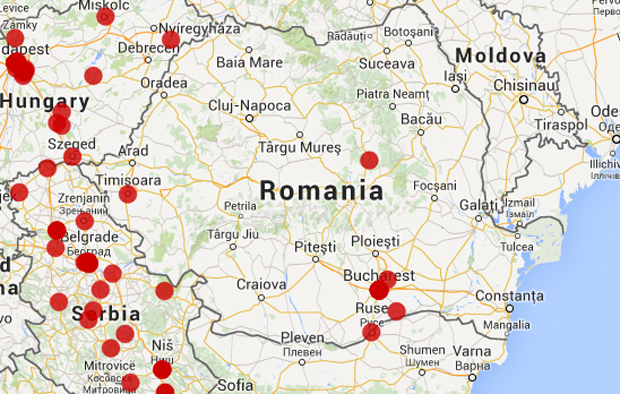Media freedom in post-Soviet Romania remains elusive

Romania has a lot of high-calibre journalists to its name. However, many media outlets are now fighting to survive while maintaining professional standards due to judicial investigations, political scandals and struggles with high debt loads. This is according to the authors of The Men Who Bit the (Watch) Dogs, which explores the media landscape in the country.
The report focuses on transparency and ownership of the media — particularly the most influential medium, television, over the past 25 years — from post-communist enthusiasm to today’s chaotic mix of business models.
While journalists in the early 1990s were independent of the pressures that marked the Soviet age, most of the 1,200 newspapers that were established at the time didn’t take off. Speaking to Index on Censorship, one of two Romanian academics behind the report, Manuela Preoteasa from think tank The Centre for Media Transparency, explains that at the time, well-known international media companies just weren’t interested in quality journalism.
“As we demonstrated in the report, the market was kept half-closed during the early 90s, which means that it was not open to foreign investors,” Preoteasa says. As the report highlights, the “market that was inhospitable to the promotion of professional journalism” and so “foreign investors had to focus solely on commercial success”.
The ethos of the era seemed to be: “We don’t sell our country to foreigners.” Foreign investors could not own a licence without a Romanian partner, and apart from state-owned channels, no other private entity could apply. For nine years, only local licences for each of the 41 counties and Bucharest were available.
With ownership of the media confined a handful of tycoons, many outsiders would have lost interest. “Show me a serious TV investor who would have been willing to invest in such an unfriendly market,” Preoteasa says. “I strongly believe that the media market was intentionally kept closed to serious investors.”
Print was different. “The history of the last decade shows that print media could not exist on its own, but only as part of a conglomerate, and the conglomerates were formed around TV stations,” Preoteasa explains. “That is why the TV industry has such a strong influence.”
Economically, many of these media outlets relied on state advertising. Some TV stations — already benefiting from debt cancellations and debt rescheduling — started to receive public money as state-owned companies began to advertise. The scheme was introduced by the government led by former Prime Minister Adrian Năstase (2000-2004) and was soon adopted by local politicians and businessmen.
Romania’s unfriendly business environment, high taxes, bureaucracy and a chronic economic instability also challenged the viability of commercial models within the media, the report says. Other challenges include “the lack of a clear distinction between information and opinion and the absence of marketing- and sales-related knowledge”.
These days, the media industry faces serious legal problems that involve either the owners of the main media groups or the groups themselves. Media owners such as Adrian Sârbu, Dan Voiculescu, Sorin Ovidiu Vântu, Sebastian Ghiţă and Dinu Patriciu have all been on trial or are under various criminal investigations.
In a young democracy, the media should play a key role in holding the powerful to account. However, this doesn’t seem to be the case in Romania.
So are there any signs of hope? “I believe the initiative will come from the telecom industry,” Preoteasa says. As to whether the telecom industry will swallow the existent media or would it invent a new one, the answer lies somewhere in between. “I am sure the online media started to have a say and the pressure from the interactive medium is high,” she says, offering an open suggestion: “Someone should look carefully at what young people are looking for and perhaps this will reveal the answer about what might come next.”
This article was posted on 27 October 2015 at indexoncensorship.org
Mapping Media Freedom
|
